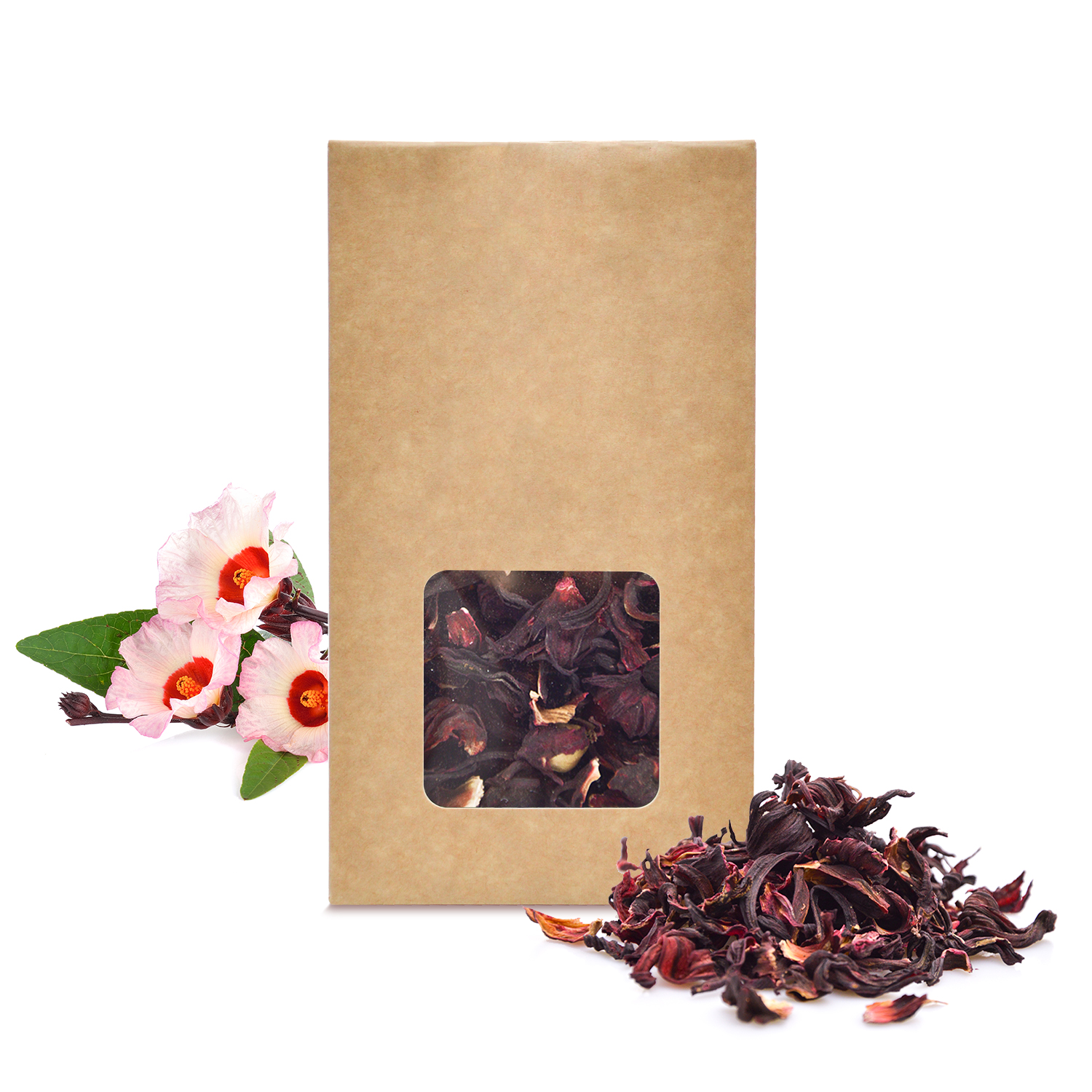
Hibiscus is best known for its infusion, also called bissap or karkadé. It has many benefits: it acts against fatigue, hypertension and even cholesterol. Hibiscus flowers also help relieve dermatological problems such as eczema, cracks and insect bites. Latin name: Hibiscus sabdariffa L. Part of the plant: flowers.
This article was updated on 08/02/2023In case of Dry hair
Recommended modes of use
In lotion
Pour the equivalent of 2 tablespoons of dried flowers into 1/2 L of hot water. Leave to infuse for 5 to 10 minutes. Filter and let cool. Apply the preparation directly to the skin or hair.
Plants often associated
In case of' Eczema, Pruritus, Cracks, Chapped skin, Irritated skin, Bites
Recommended modes of use
In lotion
Pour the equivalent of 2 tablespoons of dried flowers into 1/2 L of hot water. Leave to infuse for 5 to 10 minutes. Filter and let cool. Apply the preparation directly to the skin or hair.
Plants often associated
In case of' Hypertension
Recommended modes of use
In infusion
Pour the equivalent of 1 tablespoon of plant per cup of hot water, then let it infuse for 5 to 10 minutes. Drink 2 to 3 cups per day. Eat hot or cold.
Plants often associated
In case of Fatigue
Recommended modes of use
In infusion
Pour the equivalent of 1 tablespoon of plant per cup of hot water, then let it infuse for 5 to 10 minutes. Drink 2 to 3 cups per day. Eat hot or cold.
Plants often associated
In case of Cholesterol
Recommended modes of use
In infusion
Pour the equivalent of 1 tablespoon of plant per cup of hot water, then let it infuse for 5 to 10 minutes. Drink 2 to 3 cups per day. Eat hot or cold.
Plants often associated
Properties and active components
Properties
- diuretic
- tonic
- antibacterial (flavonoids)
- hypotensive (delphinidol-3-sambubioside, cyanidol-3-sambubioside)
- anti-inflammatory (flavonoids)
- hepatoprotective
- cholesterol-lowering (flavonoids)
Active components
- Organic acids: citric, malic, tartaric and ascorbic
- Phenyl compounds: delphinidol-3-sambubioside, cyanidol-3-sambubioside, delphinidin
- Flavonoids: gossypetin 3-glucoside, anthocyanins
- Polysaccharides: mucilages, pectins
Precautions for use
Not recommended for pregnant women.
Botanical
Hibiscus belongs to the family of Malvaceae. Annual herbaceous or bushy shrub, its erect green to reddish stems measure 1.5 m high. Its leaves are oval, dark green in color and long petiolate. In the leaf axils, flowers blossom pink flowers with dark red centers, they are composed of a fleshy calyx when mature, formed of 5 sepals. The dried fruit is in capsule.
The Hibiscus is said to originate fromAfrica, where it is mainly cultivated, notably in Senegal, Burkina Faso, Mali and Ivory Coast. The ideal climate for its production is one tropical climate. The Hibiscus flower is also the main ingredient of a bright red Senegalese drink called "bissap", consumed by locals to refresh themselves.
Was this article helpful to you?
Average grade: 4.7 ( 207 votes)
Bibliography
Publication: Ali, BH, Wabel, NA, & Blunden, G. (2005). Phytochemical, pharmacological and toxicological aspects ofHibiscus sabdariffa L.: a review. Phytotherapy Research, 19(5), 369-375. https://doi.org/10.1002/ptr.1628
Publication: Mahadevan, N., & Kamboj, P. (2009). Hibiscus sabdariffa Linn.–an overview. Natural Product Radiance, 8(1), 77-83. http://nopr.niscair.res.in/handle/123456789/3769
Publication: Haji Faraji, M., & Haji Tarkhani, A.H. (1999). The effect of sour tea (Hibiscus sabdariffa) on essential hypertension. Journal of Ethnopharmacology, 65(3), 231-236. https://doi.org/10.1016/s0378-8741(98)00157-3
Publication: Da-Costa-Rocha, I., Bonnlaender, B., Sievers, H., Pischel, I., & Heinrich, M. (2014). Hibiscus sabdariffa L. – A phytochemical and pharmacological review. Food Chemistry, 165, 424-443. https://doi.org/10.1016/j.foodchem.2014.05.002
Publication: RS Sié, DS Akaffou, D. Séka, KJL Konan, Y. Toueix, G. Charles, Y. Djè and M. Branchard. (2009). Characterization of diversity and agromorphological evaluation of a collection of Hibiscus sabdariffa L. in Ivory Coast. Afrique SCIENCE, 05(3), 65 - 76. http://www.afriquescience.info/docannex.php?id=1671
Work : Pierre, M. (2017). The bible of healing plants. Vanves, France: Editions du Chêne.
Work : Fleurentin, J., Pelt, JM, & Hayon, JC (2016). Good use of healing plants. Rennes, France: Ouest-France.
Work : Pierre, M., & Gayet, C. (2019). My 1,000 phytotherapy prescriptions (BIBLE) (French Edition) (1st ed.). Paris, France: Éditions Leduc.s.
Work : Dubray, M. (2010). Guide to contraindications of the main medicinal plants. La Geneytouse, France: L. Souny.
Website : Hibiscus infusion, properties: 8 benefits of this drink. (nd). therapists.com. https://www.therapeutes.com/ma-sante/infusion-hibiscus-proprietes
Website : Recipe: hibiscus flower syrup (bissap)! (2018, October 18). Spice Islands. https://ileauxepices.com/blog/2018/10/18/recette-sirop-de-fleurs-dhibiscus-bissap/wpid17681/


